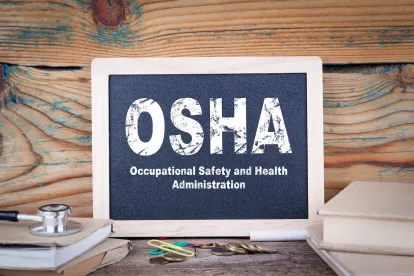The United States Court of Appeals for the District of Columbia Circuit recently issued a decision that should be of concern to every employer and safety professional. The case involved an employer that had ambitious but unimplemented requirements in its written safety procedures—a lack of implementation that in large part caused the employer to be found guilty of a violation of the General Duty Clause of the Occupational Safety and Health Act. That seems to be the lesson of the D.C. Circuit’s decision in BHC Northwest Psychiatric Hospital, LLC v. Secretary of Labor, No. 19‑1089 (March 3, 2020).
The BHC case did not involve a conventional workplace hazard, such as a chemical exposure or machine dangers. Instead, it involved violence by psychiatric patients against healthcare workers. The Occupational Safety and Health Administration (OSHA) received an anonymous complaint alleging that understaffing at a BHC facility had caused the incidence of that violence to increase. OSHA later issued a citation alleging a violation of the General Duty Clause.
An administrative law judge upheld the citation on the ground that BHC had failed to “adopt feasible abatement methods to protect employees.” Among the measures to which the judge pointed were those in the employer’s own written procedure for preventing employees against patient violence, such as showing a PowerPoint presentation on such violence; instituting a communication system to summon help against it; and requiring debriefing of employees involved in any incident in which the hazard threatened harm.
Before the court, the hospital agreed that there was a recognized serious hazard to its employees but argued that OSHA had failed to prove that there were additional steps that it could have taken that would have materially reduced the hazard. The court rejected the argument, observing that the judge had credited the testimony of OSHA’s expert witness on this point over that of the hospital’s expert witness. It concluded that OSHA had shown that “that a comprehensive workplace safety program would more effectively and consistently apply measures designed to reduce patient-on-staff violence than [the hospital]’s present system did”—that is, the system as actually implemented.
The failure to fully implement the employer’s own procedures played a central role in the decision. The court noted that the administrative law judge “was particularly troubled by the internal disconnect between [the hospital]’s written policies and its actual practice.” The court characterized the hospital’s “principal shortcoming” as seen by the judge as “its failure to fully ‘implement the policies it had on paper’ to prevent such violence.” And, as to the hospital’s complaint that it lacked fair notice of what it was expected to do, the court stated that the hospital “can hardly object that it was blindsided by the utility of measures it had already embraced, at least on paper.”
The first lesson from the decision for employers is to examine their written safety procedures and determine which of the bells and whistles in them reflect ambitious but, as a practical matter, unnecessary steps, and consider removing them. The second lesson from the decision is that if an employer deems a step sufficiently important to be a necessary part of its safety procedures, but does not implement it, it may be found to violate the General Duty Clause. Don’t let necessary but unimplemented measures described in your own safety procedures burn a hole in your safety record.




 />i
/>i


